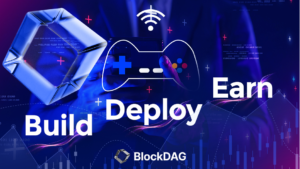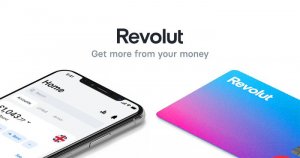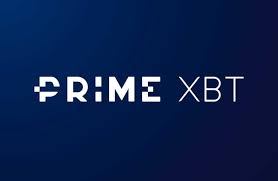Cyprus FX brokers: Your future is both derivative and definitive!
The business challenges in terms of remaining competitive compared to other brokers is a process that needs to be properly understood. This is how to structure a fully comprehensive multi-asset brokerage and give your clients the power to trade in global markets. Here is our detailed insight.

Attracting and retaining clients is now one of the biggest challenges for brokers as the FX industry matures and as CPA (Cost Per Acquisition) which is a major factor within an online advertising model grow highers, averaging $1000 per funded client in western countries.
To tackle the issue, some of the smaller retail brokers to whom the cost of acquisition and retention is extremely important, have been ever more active in developing their differentiation angle via various means, ranging from promoting the social trading experience to offering deposit bonuses and cash rebates, as well as loyalty programs and interactive marketing campaigns, while automating data intelligence for the sales teams.
On that note, trading platforms such as MetaTrader 4 may pose an issue given that the ubiquitous trading platform acts both as a key facet with which to onboard clients and as a retention problem, becoming one of the main criteria when choosing a broker to open an account with, which also means those brokers risk being easily substituted following a minor incident or an aggressive marketing campaign by a competitor.
This may well appear as though it is a complex lesson in mathematics; a matter in which accountants must balance the cost of leasing trading infrastructure from a third party platform supplier against the cost of buying media and generating leads, then subsequently factoring in the cost of sales staff to call the leads and then add up the profit post-conversion.
The reality is that in today’s retail FX industry, where the end-users have become ever more sophisticated and can absolutely tell if a broker is surviving from their deposited capital instead of connecting to a live market, which has exponentially improved the standards in terms of execution of trades within many medium-sized retail brokerages, however, it has left a conundrum, that being the completely outmoded marketing model which is not compatible with the commission business that brokerages offering genuine market execution now provide.
As the infrastructure of OTC electronic trading firms becomes the increasing subject of regulatory remit as defined by the pan-European MiFID II which uses the coercive powers of the European Commission to ensure all market infrastructure and execution policies are standardized across multiple jurisdictions, brokers find themselves faced with high expectations from extremely analytical traders in the most high-quality regions for electronic markets, and difficulty differentiating themselves from other retail brokerages using the same third-party platforms.
Most importantly, however, aside from the 1231 near-identical MetaTrader 4 retail entities that currently exist, is that the execution model required nowadays means that brokers should do what brokers are supposed to do – charge a commission for processing trades to their liquidity provider and provide their clients with an aggregated price feed consisting of prime of prime liquidity from Tier 1 banks and non-bank market makers.
This is excellent for customers if conducted correctly, but means that brokers pay a dollar-per-million charge for their liquidity management system and market liquidity, and can charge a commission rather than have the vast margins that had been the case within so many smaller brokerages several years ago which resulted from the profit and loss model that many operated.
The brokers that came to market in the middle of the last decade with a profit and loss model (living from client losses) were never able to gain market share among quality jurisdictions where the established competition was already operating a good quality trading environment for clients – and rightly so, nobody laments the passing of firms which do not have their customers’ best interests in mind – instead of coming from the affiliate marketing and media buying sector.
Now, many of those entities have adopted proper execution, facilitated by the market infrastructure specialists and prime of prime brokerages that serve the retail FX industry, but their marketing techniques in many cases remain in the mid-2000s, and in the retail FX industry, the mid-2000s is akin to the dark ages.
The fact of the matter is that high CPA of today requires ambitious goals when it comes to the client base, which means having enough available funds to embark on large marketing operations and have a unique value proposition to lower the CPA.
The quest for differentiation may also lead to the in-house development and maintenance of proprietary software despite the obvious costs because in addition to promoting their own platform to their clients and increasing the rate of client retention as they grow accustomed to an environment they will not likely find elsewhere, these brokers can also reduce their costs or even make a profit out of offering white labelling solutions to other firms.
Simply, buying leads and hoping for sales calls to convert them into live clients is futile.
This is because the same leads are being recycled between brokers, the same leads are being targeted by firms offering similar propositions, and the media buying cost vs the actual conversion rate is as low as 1% in the retail sector.
Hence, one-off retail clients from non-aligned countries, with very little capital and in some cases no chance of being able to satisfy compliance requirements are depositing between $500 to $1000 as a first-time deposit, and the cost of acquiring the customer is now past $1500, with a lifetime value of just three months.
Whichever way that is viewed, it is a loss.
One of the reasons for the high cost and lack of efficiency is that, according to two London-based media analytics firms that have provided digital marketing data to FinanceFeeds, the potential customers are in many cases no longer potential customers because these are leads that have been to over ten brokerages, hence the same people are being bombarded by the same calls from almost identical companies, and many have lost their initial deposit with the first company, and are therefore now worn down by the repetition of calls.
The question remains: Why are so many firms still paying a fortune to a white label provider and having no control over their product range and no ability to scale up and operate as a genuine market participant, away from margin FX and in the prestigious arena of equities, futures and proprietary CFDs? This is where a broker becomes master of its own destiny.
Today, to look at this further, FinanceFeeds looked closely at the business model of Colmex, which was established in 2003.
Speaking to Tzah Druker, CTO and Head of Product at Colmex today, FinanceFeeds gained detailed perspective on how to structure such a brokerage. “We established this company 18 years ago, initially with British Virgin Islands registration, however, what has remained important to us is that this began life as a very special broker because it did not offer CFDs or FX, but rather it offered only equities on the US market, working through a US broker/dealer and transfer all to NYSE and Nasdaq exchanges for execution,” said Mr Druker.
“In around 2010, due to the regulatory environment in various offshore jurisdictions, the company moved to Cyprus in order to operate under the European MiFID rulings as am equity broker. At that point, we still did not offer CFDs or spot FX” continued Mr Druker.
“In 2012, we increased the remit of our license and offered, in addition to equities, proprietary CFDs and standard FX, along with other indices and commodities. We are therefore a comprehensive multi-asset broker, having approached the market by entering it from the equities business. Unlike most regulated entities in Cyprus, we do most of our volume on equities in the US market” explained Mr Druker.
“For this reason, a multi-asset solution is vital to our business. Most of our traders want to join an IPO or follow trending stocks. We recently had a few traders come in on the Bumble IPO which took place not long ago. The fact that we use a multi-asset platform allows our traders to decide what they want to buy. They can hedge Euro currency for example. In addition, our CFD solution is different from that offered by many ‘spread betting’ companies, as it is based on the underlying asset. Our CFD on equities is a lot different to other platforms such as those provided by Plus 500 or IG Group, as their equities are spread based. If you look at the price offered on those platforms, it’s based on the spread” said Mr Druker.
“The main difference is that we have a proprietary CFD solution that allows us to offer our traders the ability to purchase a CFD on a stock at the same price that it is being traded on NYSE or NASDAQ as well as seeing the second level. This provides the same ask and bid prices, and traders can check any other platform from a bank or US stockbrokers such as E*TRADE, and they will see the same prices on the multi-asset platform is the same as the actual stock itself” said Mr Druker.
“This enables our traders to reach a simple decision to trade the CFD or equity. Of course, there are liquidity issues that exist with equities that do not exist with CFDs, especially surrounding the leverage itself. There are a lot of advantages of trading CFDs as long as the broker does not spread them” Mr Druker pointed out.
“For this reason, we began to work with the TraderEvolution Global platform, as we needed the pricing algorithm for the CFD that is our own. We needed to understand whether a platform technology company would be able to introduce our pricing algorithm into their platform to make sure they are the same as the market, and to be sure that the execution would be the same as our proprietary algorithm. We needed a multi-asset platform, and then to be able to customize the solution to make it so that we could price on our proprietary instruments” said Mr Druker.
In terms of further background, Colmex is the only company which is licensed to sell CFDs on Israel’s Tel Aviv Stock Exchange’s 35 most wanted stocks. The brokerage is regulated by the Israel Securities Authority in accordance with the Tel Aviv Stock Exchange, an accolade that is not often afforded to any retail brokerage. The TraderEvolution Global platform has proven vital in ensuring that the full multi-product solution can be provided, hence Colmex has a tremendous advantage in being able to place its clients among professional traders in global markets.
Mr Druker continued to explain “I take the view that it is important to be able to provide the technical solution to the specific requirement for the specific application. For example, if a company needs to be able to price CFDs in a way that they can explain to the regulator how they arrived at a price, this means that a broker must get it from the exchange, not from another broker.”
“Whether the product is FX or futures, prices that have not been subjected to spread are important, as a broker needs to explain everything and how he got there so everything can be transparent. This was part of the entire package for a multi-asset platform” he said.
“The business challenges in terms of remaining competitive compared to other brokers, transferring MetaTrader 4 to MetaTrader 5, for example, is a process that needs to be understood. Brokers all need to consider who their liquidity partner will be, who their quote provider will be and how all of these components integrate into their solution. There is often a lot of reference to turnkey solutions when in reality, brokerages very rarely are able to be powered by a turnkey solution. Every company has its own special requirements that need to be taken into account, as does every regulator” said Mr Druker.
“Our TraderEvolution Global platform is able to provide a multi regulated solution across all venues and asset classes, and we will soon begin to offer a white-label to commercial partners. The actual usage of the TraderEvolution multi-asset platform is a project which required significant development. We needed to see if it accepted the load of our customers. I went into clusters, servers, databases, and looked at the entire infrastructure as these need to be taken into account when trading” said Mr Druker.
“We did a promotional event with 5000 demo traders competing among themselves on the demo platform. This created a huge load on the servers when supporting thousands of real traders all at once. It was challenging to adapt to the environment and to see four times the amount of users. Brokers need to work with a provider that knows the important aspects of their business and can support them when they have an unexpected increase in traders and volume” explained Mr Druker.
Absolutely right indeed, and a poignant moment to mention such an important matter given the outages suffered by many longstanding spread betting companies recently during the Meme stock phenomenon.
“We spent a lot of time adjusting the environment” explained Mr Druker. This is important when choosing a vendor, to help you handle events such as regulatory events or excess load. I think there are some tremendous challenges in future. Some firms may try to cut off the ability to short certain stocks such as GameStop, and perhaps stop them pumping them up in case people are left with worthless stocks” he said.
“Blocking symbols for trading should only be used under very serious situations and decisions like that should not be made by brokers. That should be an exchange decision. This recent Meme stock situation was a unique event. Now, if that happens again, perhaps some of the brokers concerned will have produced a manual on how to handle those specific trades for symbols such as those” he said.
“Our TraderEvolution Global platform has a distinct advantage in that it is a relatively new-technology platform. It is very adaptive to mobile, to different screen sizes, different operating systems, and environments. Similarly, it is very scalable as it is easy to work with something that was designed to scale from the beginning. If you want to scale up a MetaTrader environment, it is very complicated. Scaling a TraderEvolution Global platform is easy. I was in charge of developing such platforms 20 years ago, so I am familiar with the architecture of how to build systems that scale, going from 100 to 10000 clients very quickly, for example, where you do not need to rebuild the nodes for delivery and the environment. It is very important to build something that can support a quick increase from 200 clients to 200,000 clients if you do it in advance” explained Mr Druker.
“From a programming perspective, if you write something simple and then want to expand, it will be difficult. Therefore, our platform provider has a complete solution for different activities of customers, whether that be day traders, portfolio managers or equities traders. We can use different data sets, therefore if most clients are using two screens with at least ten stocks with second-level data, the amount of data streaming into their platform is one hundred times more than someone looking at their portfolio using a mobile. This is why it took us a year to test and prove that this solution would be the right one” explained Mr Druker.
“You need to be able to be very flexible and use a very flexible environment and this is one thing to check when you transition your brokerage across to a multi-asset environment. For example, you may need servers which will handle at least 7000 symbols traded at high volume on NYSE or NASDAQ, which means that you cannot provide a server at the infrastructure level, so you would need to do a lot of reconciliation and redundancy and still keep everything real-time. Therefore, choosing the correct multi-asset platform that can deliver in real-time and be flexible and scalable is vital” said Mr Druker.
“Usually these projects take a long time and cost a fortune,” he said, “but in this case, we already have got the benefits. We have 70% of clients already on this platform and it is getting more and more popular all the time. We are supporting the world series of day trading, and we are supporting it with trading technology using the TraderEvolution platform, our expectation being that 10,000 participants and the platform will easily be able to provide the service that needs to be provided across multiple devices from day traders” said Mr Druker.
“We believe in the standard financial instrument scheme, so we will be supporting OTC products as well as indices, but our main concentration which is our niche, is CFDs on equities. Ours is quite unique in the market. Currently, our platform provides equities, and CFDs on equity. In a month’s it will have all the FX pairs, commodities, indices and later on derivatives and options as well as Chicago futures.
We are looking forward to that, and to leading the way for the much needed and long-awaited multi-asset revolution.









